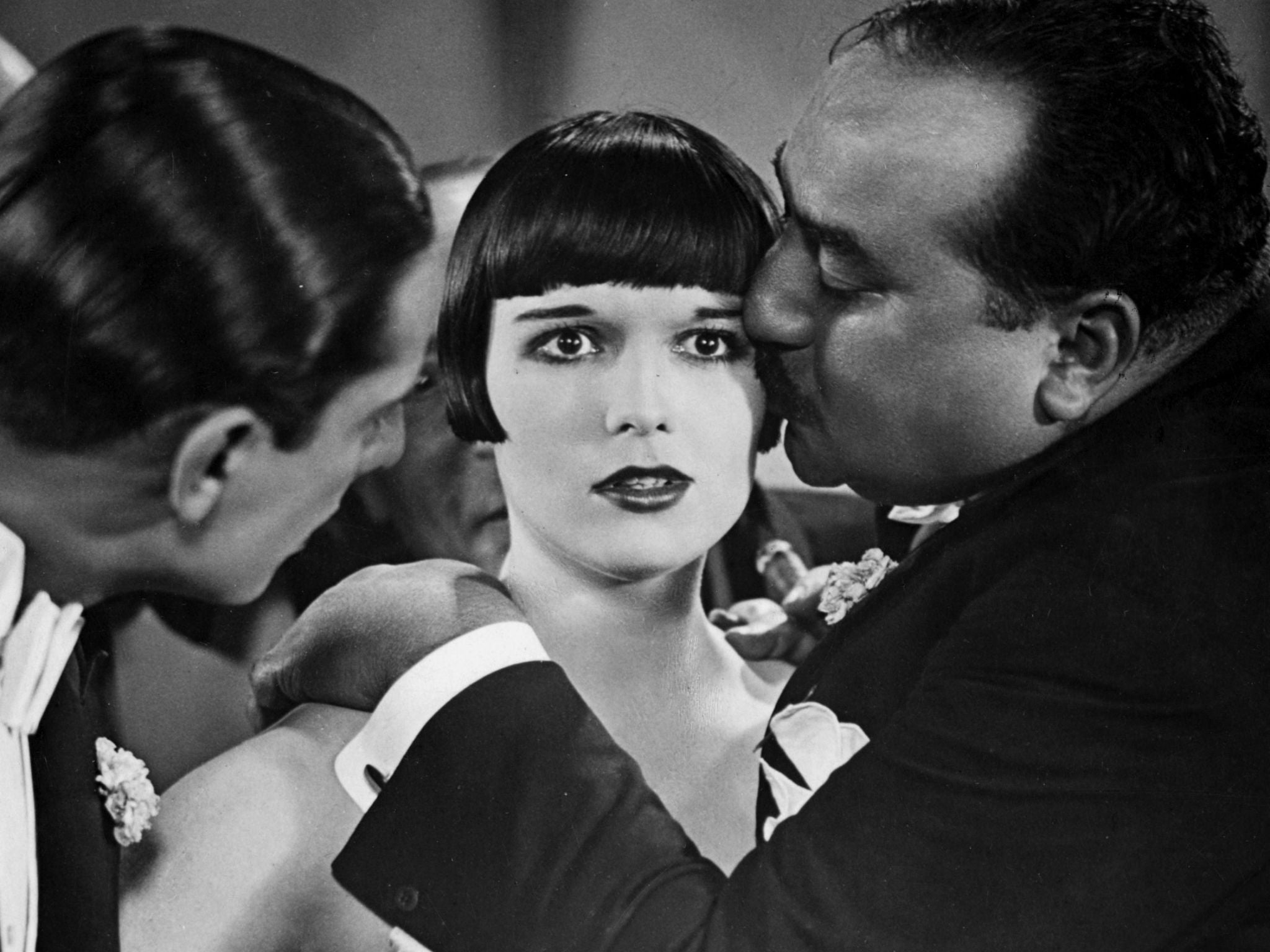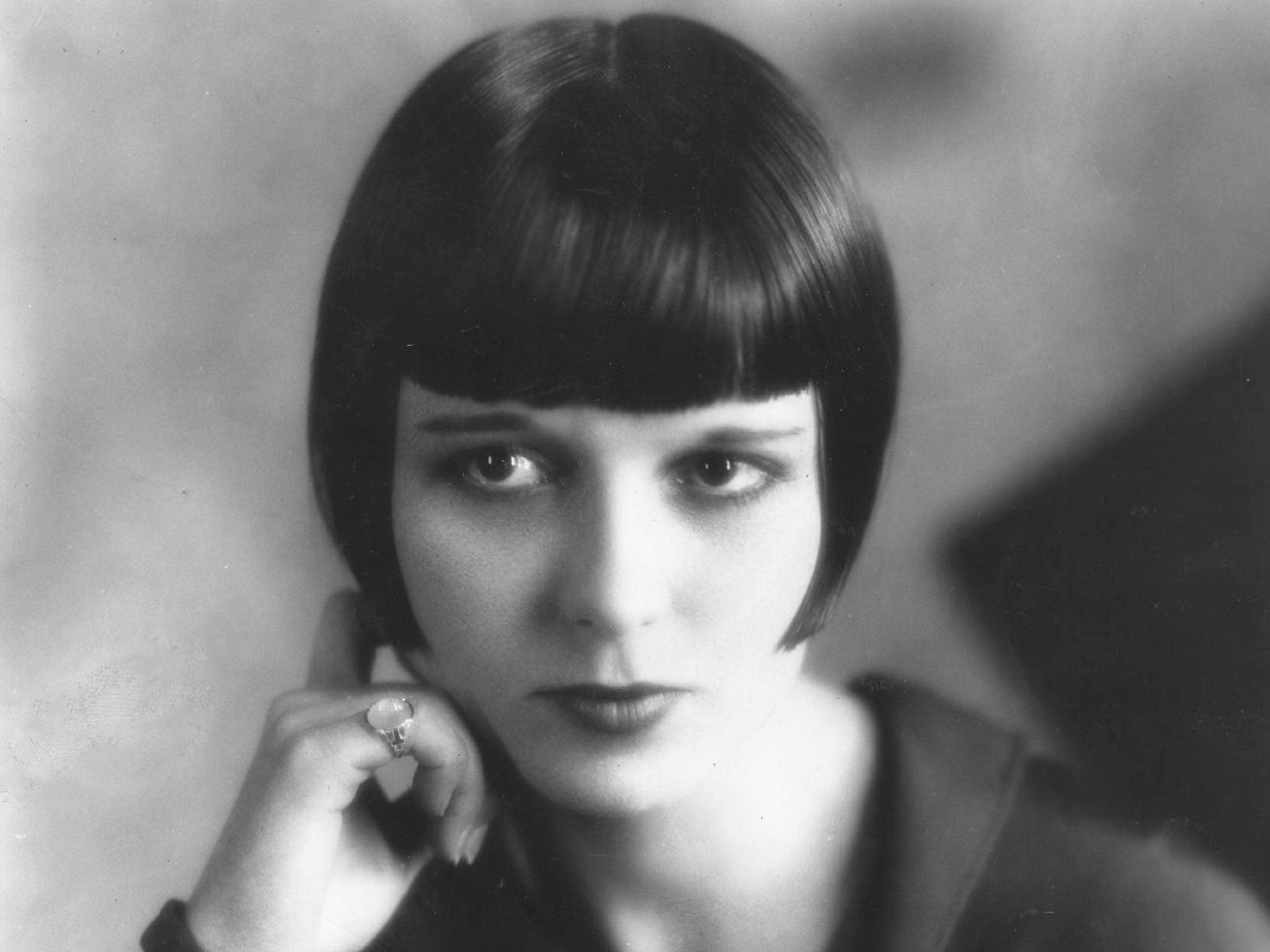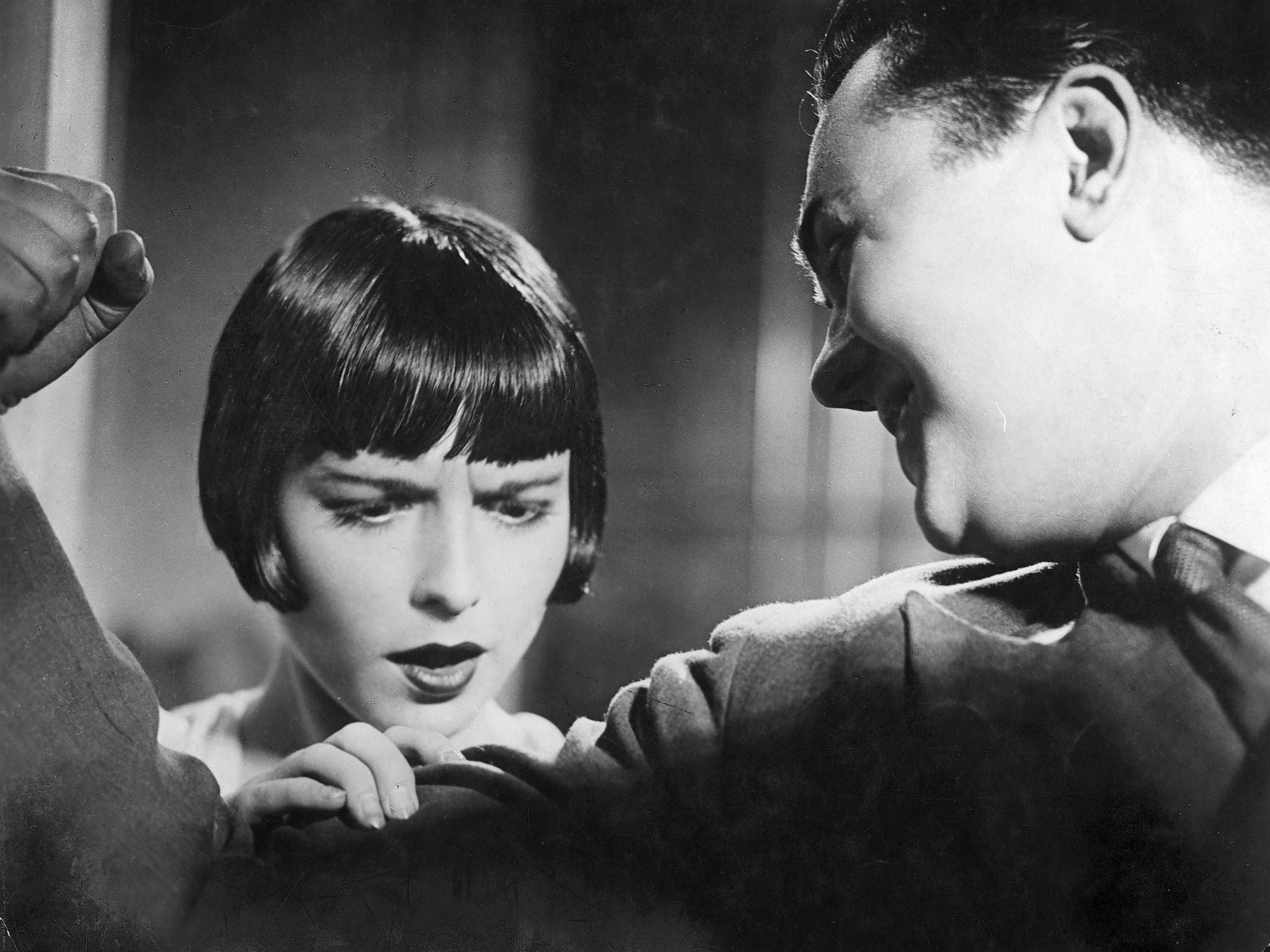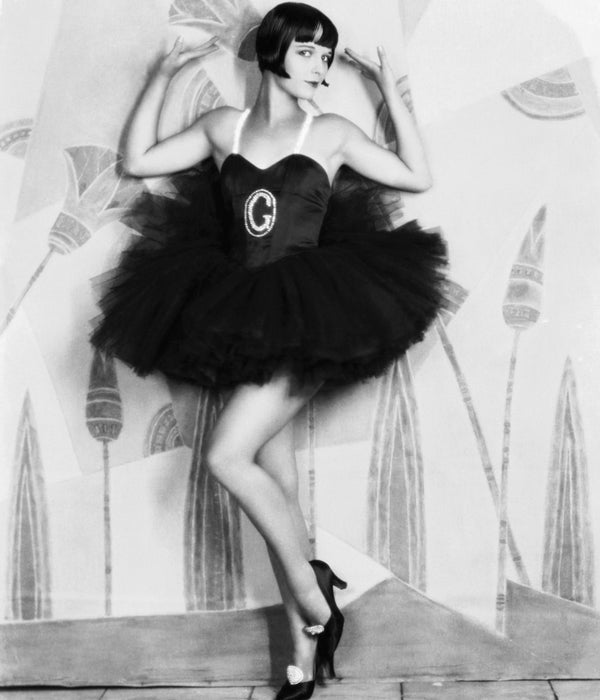Louise Brooks: The silent era It girl who became a film critic
The Hollywood star ended up working in a department store, before being 'rediscovered' and becoming an essayist

Your support helps us to tell the story
From reproductive rights to climate change to Big Tech, The Independent is on the ground when the story is developing. Whether it's investigating the financials of Elon Musk's pro-Trump PAC or producing our latest documentary, 'The A Word', which shines a light on the American women fighting for reproductive rights, we know how important it is to parse out the facts from the messaging.
At such a critical moment in US history, we need reporters on the ground. Your donation allows us to keep sending journalists to speak to both sides of the story.
The Independent is trusted by Americans across the entire political spectrum. And unlike many other quality news outlets, we choose not to lock Americans out of our reporting and analysis with paywalls. We believe quality journalism should be available to everyone, paid for by those who can afford it.
Your support makes all the difference.She was one of the silent era’s most celebrated stars, the bob-haired sex symbol whose greatest triumph was in German director GW Pabst’s Pandora’s Box in 1929. And yet Louise Brooks went, in the space of less than 20 years, from Hollywood stardom to working in a New York department store for $40 a week.
The rerelease this month of Pandora’s Box provides an opportunity to look again at the life and career of an actress who – according to her contemporary, the critic Lotte Eisner – “needed no directing but could move across the screen causing the work of art to be born by her mere presence.”
Everything about Brooks, who died in 1985, was contradictory. She was the American midwesterner (born in Wichita, in the Kansas corn belt), who projected European sensuality and sophistication; the Hollywood actress whose best work was done in Germany.
She was the promiscuous “flapper” whose refusal to sleep with studio bosses may have cost her her career. She was the chorus girl who read Proust and Schopenhauer. She was the hedonistic, globe-trotting “It girl” who later lived a spartan, isolated life on her own in a small apartment in Rochester, New York State.

She was the consort of millionaires who seemed never to have enough money. She was the recklessly outspoken and independent-minded feminist who wrote a tell-all memoir called Naked On My Goat, but was then too embarrassed to publish it. “When I read what I’d written, I threw the whole thing down the incinerator,” she later confessed.
As a midwestern girl, brought up in a strict religious background, she couldn’t, as she put it “unbuckle the Bible Belt”. At the same time, though, she felt that complete candour was essential in any worthwhile biography or autobiography: “I believe absolutely that the reader cannot understand the character and deeds of the subject unless he is given a basic understanding of that person’s sexual loves and hates and conflicts. It is the only way the reader can make sense of innumerable apparently senseless actions.”
Brooks had never been trained to act – and yet many highly respected curators, critics, historians and filmmakers regard her as one of the greatest of all screen performers.
Several of these “experts” have been credited with her re-discovery. Henri Langlois, director of the Cinémathèque Française in Paris, programmed a season of her films in the late 1950s. The British critic Kenneth Tynan struck up a friendship with her and later wrote an influential New Yorker essay (“The Girl In The Black Helmet”) about her, published in June 1979. James Card, founder of the Department of Film at the George Eastman House of Photography in Rochester, befriended her, helped preserve her films and persuaded her to move to Rochester.

Under his tutelage, she became, of all things, a film critic herself. Her essays on Lillian Gish and Greta Garbo, Humphrey Bogart, WC Fields and on her collaboration with Pabst (who also directed her in Diary Of A Lost Girl) are collected in the entertaining and surprising book, Lulu In Hollywood, originally published in 1982.

Watch Apple TV+ free for 7 days
New subscribers only. £8.99/mo. after free trial. Plan auto-renews until cancelled

Watch Apple TV+ free for 7 days
New subscribers only. £8.99/mo. after free trial. Plan auto-renews until cancelled
What strikes you reading Brooks’ essays isn’t just her elegant turn of phrase but her contrariness. She never accepts received opinions and is always ready to challenge the perspectives and behaviour both of Hollywood’s power brokers and of its historians.
In her analysis, the reason that many stars’ careers unravelled had little to do with waning popularity at the box office. It was always economics. Producers wanted them to fail. They blamed these stars for standing between them “and the full realisation of their greed and self-aggrandisement”.
The quickest way to cut them down to size, Brooks argued – and she was arguing at least partly from personal experience – was to put them in projects almost certain to flop at the box office.
She was caustic on her co-stars too. Her friend Humphrey Bogart has one of the most fierce, distinctive faces in film history – but she had a different perspective on him. They met when she was a struggling stage actor in the 1920s. “On the stage, he was as formless as an impression lost through lack of meditation, as blurred as a name inked on blotting paper,” she observed.

It was not all scathing revisionism, however. W.C. Fields may be portrayed by most historians as an eccentric curmudgeon, but she knew him well (she was in the Ziegfeld Follies with him in the 1920s) and writes movingly about his “other face”, his gentleness and sensitivity.
Film lore has it that Charlie Chaplin (with whom she had a brief affair), was penny-pinching and mean in the extreme. She portrays him as a man of extraordinary generosity and forbearance.
Brooks was also a wonderful phrase maker. She memorably described dancing with the lardy but fleet-footed Fatty Arbuckle (the disgraced comedian who directed her in a forgotten film called Windy Riley Goes To Hollywood) as being “like floating in the arms of a huge doughnut”.
The Hollywood she worked in was as full of lecherous and sexually abusive male executives as the industry has, with the advent of #MeToo, proved to be today. Brooks has startling stories about her treatment at the hands of Columbia boss, Harry Cohn, when she returned from Europe at the start of the 1930s.
Columbia had promised her a contract but, as she told Tynan, Cohn turned up at all their meetings “naked from the waist up” and made it very clear to her that her career advancement depended on responding positively to his advances. She refused, and disappeared as a consequence into the bottomless pit of small parts in B-movies.
Brooks left Hollywood for good in 1940, drifted back to Kansas where, as a fallen Hollywood star, she was both envied for her success and despised for her failure.

She eventually ended up in New York. But when she took a job as a salesgirl at Saks Fifth Avenue with the idea of proving herself as an “honest woman”, all her famous New York friends were “disgusted” and “cut her off forever,” she said. She was yesterday’s star, shunned by Hollywood and fast heading towards anonymity.
Of course, these reversals – combined with her very colourful love life – only ended up added to her allure. It seemed to all those film historians and critics so keen to rediscover her that, off-screen, she was living a life like that of her most famous movie character, Lulu in Pandora’s Box.
Lulu was a sexually uninhibited showgirl who not only had multiple affairs but showed absolutely no guilt about doing so. But it was a potent, substantial role for Brooks.
In her Hollywood films, Brooks had been used (in her own words) as a “pretty flibbertigibbet”. With Pabst as her director, she became an actress.
Ninety years on, her magnetism is still apparent. Not only does she have one of the most famous haircuts in film history – that androgynous, jazz age bob – but her eyes are extraordinarily expressive. Brooks was a trained dancer and moves on screen with a lithe grace. The camera loves her. She has an inscrutable and aloof quality.
In the film’s London-set finale, living in poverty in the East End, holed up in a squalid garret, knocking back the booze and eating bread so stale she can barely bite into it, Brooks’ Lulu is still effortlessly glamorous.
Out on the mist-shrouded streets, a man (“The Ripper”) has been luring women into dark places in order to murder them. Inevitably, Lulu runs into him and invites him to come on up. He doesn’t have any money but she likes the look of him.
Pabst cuts between radiant close-ups of Brooks and shots of the killer pulling out his knife. She sits on his lap. He holds up a piece of mistletoe, they lean forward to kiss, he picks up the knife… her hand drops.
It is one of the strangest death sequences in cinema: creepy, erotic and with a perverse tenderness. Whatever interpretation one makes of it, Brooks’ brilliance shines through. Watching it, you understand immediately just why she has cast such a spell for so long.
A new digital restoration of ‘Pandora’s Box’ is in cinemas now
Join our commenting forum
Join thought-provoking conversations, follow other Independent readers and see their replies
Comments